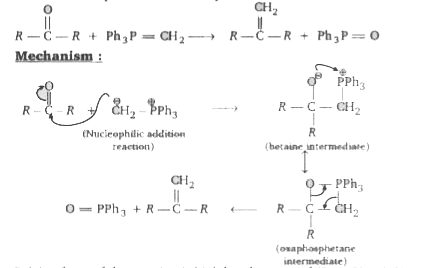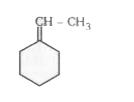Oxidation of ketones involves carbon-carbon bond cleavage. Name the products formed on oxidation of 2, 5-dimethylhexan-3-one.
To solve the problem of naming the products formed on the oxidation of 2,5-dimethylhexan-3-one, we will follow these steps:
Step 1: Understand the Structure of 2,5-Dimethylhexan-3-one
2,5-Dimethylhexan-3-one is a ketone with the following structure:
- It has a total of 6 carbon atoms (hexane).
- There are two methyl groups attached to the second and fifth carbon atoms.
- The ketone functional group (C=O) is located at the third carbon.
The structure can be represented as:
CH3|CH3−CH−CO−CH2−CH−CH3|∣CH3CH3
Step 2: Identify the Oxidation Process
When ketones undergo oxidation, they typically break carbon-carbon bonds. In this case, we will consider the cleavage of the bond adjacent to the carbonyl group (C=O).
Step 3: Determine the Cleavage Point
In 2,5-dimethylhexan-3-one, we have the following:
- The carbon chain is numbered from 1 to 6.
- The carbonyl carbon (C=O) is at position 3.
- The carbon-carbon bond that will break is between the carbon at position 3 and the carbon at position 4.
Step 4: Predict the Products
Upon oxidation, the bond between the carbon at position 3 and position 4 will break. This will yield two products:
1. A carboxylic acid from the carbon chain that includes the carbonyl carbon (C=O) and the carbon at position 4.
2. An alkane from the remaining carbon chain.
The products will be:
- From the carbon chain containing the carbonyl carbon (C=O):
- The carbon at position 3 will be converted to a carboxylic acid (COOH).
- The carbon at position 4 will also be oxidized to form a carboxylic acid.
- The remaining chain will yield a propyl group (C3H7).
Step 5: Name the Products
1. The carboxylic acid formed from the oxidation will be 2,5-dimethylpentanoic acid (since it has 5 carbons in total).
2. The other product will be propyl (C3H7).
Thus, the final products of the oxidation of 2,5-dimethylhexan-3-one are:
- 2,5-dimethylpentanoic acid
- Propan-1-ol (from the remaining chain)
Final Answer
The products formed on oxidation of 2,5-dimethylhexan-3-one are:
- 2,5-dimethylpentanoic acid
- Propan-1-ol
2,5-Dimethylhexan-3-one is a ketone with the following structure:
- It has a total of 6 carbon atoms (hexane).
- There are two methyl groups attached to the second and fifth carbon atoms.
- The ketone functional group (C=O) is located at the third carbon.
CH3|CH3−CH−CO−CH2−CH−CH3|∣CH3CH3
When ketones undergo oxidation, they typically break carbon-carbon bonds. In this case, we will consider the cleavage of the bond adjacent to the carbonyl group (C=O).
In 2,5-dimethylhexan-3-one, we have the following:
- The carbon chain is numbered from 1 to 6.
- The carbonyl carbon (C=O) is at position 3.
- The carbon-carbon bond that will break is between the carbon at position 3 and the carbon at position 4.
Upon oxidation, the bond between the carbon at position 3 and position 4 will break. This will yield two products:
1. A carboxylic acid from the carbon chain that includes the carbonyl carbon (C=O) and the carbon at position 4.
2. An alkane from the remaining carbon chain.
- From the carbon chain containing the carbonyl carbon (C=O):
- The carbon at position 3 will be converted to a carboxylic acid (COOH).
- The carbon at position 4 will also be oxidized to form a carboxylic acid.
- The remaining chain will yield a propyl group (C3H7).
1. The carboxylic acid formed from the oxidation will be 2,5-dimethylpentanoic acid (since it has 5 carbons in total).
2. The other product will be propyl (C3H7).
- 2,5-dimethylpentanoic acid
- Propan-1-ol (from the remaining chain)
The products formed on oxidation of 2,5-dimethylhexan-3-one are:
- 2,5-dimethylpentanoic acid
- Propan-1-ol
Topper's Solved these Questions
- BOOK - NCERT EXEMPLAR ENGLISHCHAPTER - ALDEHYDE, KETONES AND CARBOXYLIC ACIDSEXERCISE - Long Answer Type Questions4videos
ALDEHYDE, KETONES AND CARBOXYLIC ACIDS
- BOOK - NCERT EXEMPLAR ENGLISHCHAPTER - ALDEHYDE, KETONES AND CARBOXYLIC ACIDSEXERCISE - Long Answer Type Questions4videos
ALDEHYDE, KETONES AND CARBOXYLIC ACIDS
- BOOK - NCERT EXEMPLAR ENGLISHCHAPTER - ALCOHOLS, PHENOLS AND ETHERSEXERCISE - All Questions74videos
ALCOHOLS, PHENOLS AND ETHERS
- BOOK - NCERT EXEMPLAR ENGLISHCHAPTER - AMINESEXERCISE - LONG ANSWER3videos
AMINES
Similar Questions
Knowledge Check
- Question 1 - Select One
In alkenes, π -electrons forming carbon-carbon π-bond are
AlocalisedBdelocalised over the entire moleculeCmay or may not be delocalisedDnone of the above - Question 2 - Select One
Wittig reaction :
The reaction of a phosphorus ylide with an aldehyde (or) ketone introduces a carbon-carbon double bond is place of the carbonyl bond.

Driving froce of the reaction is high bond energy of (P = O). (ΔH=−ve).
 , Major product (A) is :A
, Major product (A) is :A B
B C
C D
D
Oxides of Carbon
View SolutionThe number of oxides formed by carbon is:
View SolutionCarbon-carbon bond-order in benzene is -1.5 due to
View SolutionName the catalyst which is used in the oxidation of ammonia to nitric oxide. Name the other product of the oxidation reaction.
View SolutionOxidation number of carbon in carbon suboxide (C3O2) is :
View SolutionOxidation number of carbon in graphite is :-
View Solution

